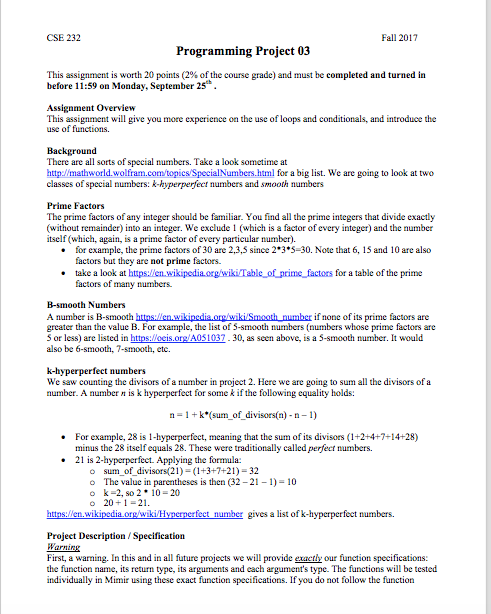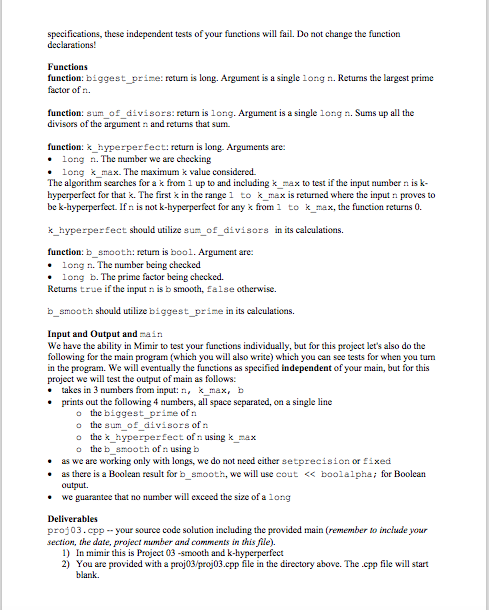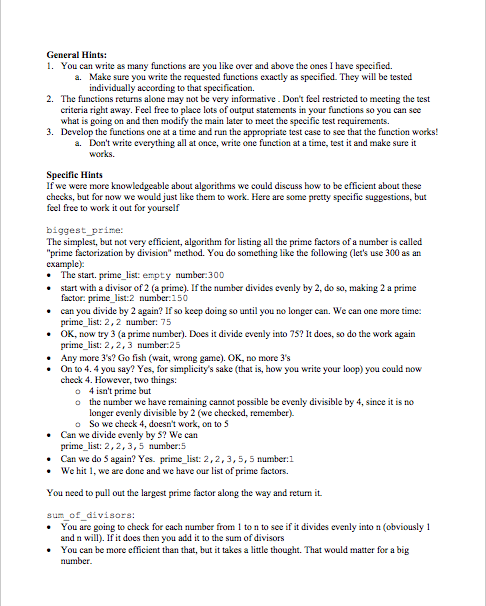



CSE 232 Fall 2017 Programming Project 03 This assignment is worth 20 points (2% ofthe course grade) and must be completed and turned in before 11:59 on Monday, September 25 This assignment will give you more experience on the use of loops and conditionals, and introduce the use of functions. There are all sorts of special numbers. Take a look sometime at http://mathworld.wolfram.com topics/SpecialNumbers.html for a big list. We are going to look at two classes of special numbers: k-hyperperfect numbers and smooth numbers Prime Factors The prime factors of any integer should be familiar. You find all the prime integers that divide exactly (without remainder) into an integer. We exclude 1 (which is a factor of every integer) and the number itself (which, again, is a prime factor of every particular number). .for example, the prime factors of 30 are 2,3,5 since 2*3*5-30. Note that 6, 15 and 10 are also factors but they are not prime factors. take a look at https:len wikipedia.oeg/wiki Table of prime factors for a table of the prime factors of many numbers. B-smooth Numbers A number is B-smooth httasen wikincdia.ore/wikilSmooth number if none of greater than the value B. For example, the list of 3-smooth numbers (numbers whose prime factors are S or less) are listed in https:locis.or A051037.30, as seen above, is a 5-smooth number. It would also be 6-smooth, 7-smooth, etc. its prime factors are k-hyperperfect numbers We saw counting the divisors of a number in project 2. Here we are going to sum all the divisors ofa number. A number n is k hyperperfect for some k if the following equality holds: n 1+k(sum of divisors(n) n-1) .For example, 28 is 1-hyperperfect, meaning that the sum of its divisors (1+2+4+7+14+28) minus the 28 itself equals 28. These were traditionally called perfect numbers. .21 is 2-hyperperfect. Applying the formula o sum of divisors 2) (1+3+7+21) 32 o The value in parentheses is then (32-21-1)-10 k=2, so 2 * 10=20 20+1= 21. httos:/en.wikipedia org/wiki Hynernerfect number gives a list of k-hyperperfect numbers. Project Description/Specification arnir First, a warning. In this and in all future projects we will provide evactly our function specifications: the function name, its return type, its arguments and each argument's type. The functions will be tested individually in Mimir using these exact function specifications. If you do not follow the function










